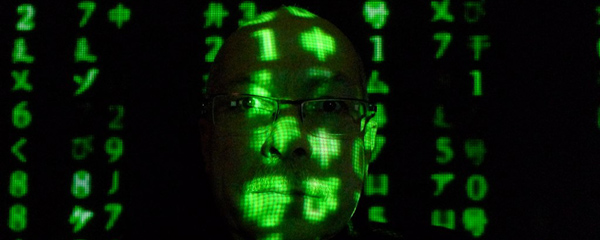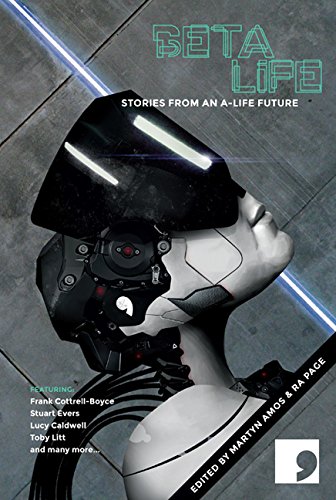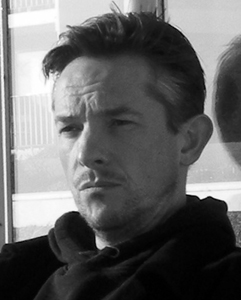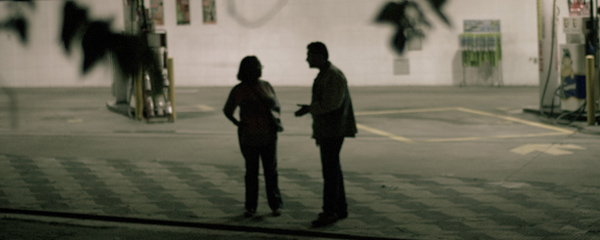
photo © Pierre Metivier
BE CAREFUL WHAT YOU WISH FOR: BETA LIFE
by DAVID FRANKEL
Beta Life is a rare combination of fiction and non-fiction. It is a collection of work by thirty-eight scientists and authors working in pairs to imagine what life will be like in 2070. The book’s subtitle, ‘Stories From An A-Life Future’, refers to ‘artificial life’ – what happens when technology becomes indistinguishable from the ‘natural’ world. Beta Life explores the changes that might be brought about by this technology, but what makes these stories particularly interesting is how they explore what it is that makes us human, the things at the core of how we react to the world.
The collection’s emphasis is clearly on the nineteen short stories, but the essays that accompany them are no less interesting. Each one is engaging and accessible in its own right. Written by the scientists and academics that worked with the authors, the essay for each story is presented as an afterword. Some offer a commentary on the story’s content and its philosophy, some a discussion on the technology involved in the story, but all give the reader a lucid discussion on social and personal ramifications of those technologies. They remind us that the authors of these essays, as much as the fiction writers are communicators of ideas.
This link between the fictional elements of the anthology and real developments in technology and science gives a weight to the stories that some contemporary science fiction lacks. There are parallels to draw here with authors such as Arthur C. Clarke, who concerned themselves with the ‘bigger picture’ of where technology would take us, but I think the stories in Beta Life, with their focus on the struggles of individual characters, all convincingly and engagingly rendered, have more in common with writers like J.G. Ballard, William Gibson and Philip K. Dick, and their interest in what technology would do to the human soul.
The overarching concerns that sneak into any vision of future technology are the same now as they were in early science fiction: will it help us or hurt us? But the nature of technology and our uses for it have changed and the threats that form the backdrop to the human dramas in Beta Life are more insidious than those of the traditional canons of science fiction. Good modern science fiction differs from earlier examples of the genre in one key way – whether they are dystopian or utopian, modern stories in this genre embrace complexity and uncertainty. They reflect a more complicated world and our lack of faith in our own nature. The threat that lurks in many of these stories is not that of technology breaking free of our control, but what we will choose to do with it, and can we trust ourselves.
In ‘Fully Human’, by K.J. Orr, one of her characters has perfected the ability to enhance any aspect of the human brain. He bemoans his students who, when asked what they would chose for their own ‘designer’ brains, ‘opt for logic, speed, efficiency. They would want better memory […] not a single one chose empathy, compassion, wisdom, creativity, joy, humour’.
 In the essay that follows, Thomas S. Ray comments that Orr’s story is set in a world where ‘we lose our humanity through individual choice, not through government coercion’. It is this dilemma that is at the heart of many of the stories in the volume. Not the oppression of a controlling external evil, but the choices of individuals. The stories in Beta Life are all told on a human scale, exploring the tension between the individual and their surroundings. These ‘small’ events draw the reader into the wider landscape of the future.
In the essay that follows, Thomas S. Ray comments that Orr’s story is set in a world where ‘we lose our humanity through individual choice, not through government coercion’. It is this dilemma that is at the heart of many of the stories in the volume. Not the oppression of a controlling external evil, but the choices of individuals. The stories in Beta Life are all told on a human scale, exploring the tension between the individual and their surroundings. These ‘small’ events draw the reader into the wider landscape of the future.
Inevitably, technology is a central part of the stories’ make up. Some of them share common themes such as ‘swarm’ or nano technology and computer/brain interfacing, evidently hot topics of current scientific exploration, but the technology is present as a catalyst for human drama rather than a subject itself. Each writer takes the starting research to a very different place. Science fiction is at its best when, like this, it uses technology and the unknowability of the future, to create situations that allow author and reader to test what makes us who we are. In his essay ‘Dream Sequence’, Martyn Amos points out that when the technology in a story has become ubiquitous ‘the story then becomes less about the ‘tech’ per se and more about connecting characters and exploring impossibilities’.
However alien the surroundings, it is the human elements that make these stories really compelling, and the stories that engage us tend to be about the same loves and fears whenever they are written and whenever they are set. Martyn Bedford uses this to humorous effect in ‘The Sayer of the Sooth’, a story about lie-detecting technology and its power to induce paranoia:
My great-grandfather is handed an amazing piece of technology and the chance to play soothsayer – to imagine any kind of future he cares to and write about whatever he likes – and he comes up with a story about a feller whose wife is cheating on him…
Part of the collection’s freshness and strength comes from the variety of approaches taken by the authors. The writers of Beta Life are prospecting – sampling possible futures to see which rings true – testing what it is that drives us on. Ultimately though, it is the strength of the writing that recommends the collection and will draw in readers who would not usually read science fiction. The authors included in the anthology are not necessarily ‘sci-fi authors’. Readers of Sean O’Brien’s work, for example, will be more familiar with his darkly haunting poems and short stories.
O’Brien’s ‘Certain measures’, set in a now-ish near future, is about knowledge and what we choose to do with it. Like a number of stories in the collection, O’Brien’s story touches on the dividing nature of technology when, as seems inevitable, there will be ‘haves’ and ‘have nots’. Following a government agent as he manipulates a crowd for political ends, the story poses a moral question about accepting responsibility for one’s actions. A science fiction story that shares the atmospheric prose of his other work is a powerful combination.
The waves of shoppers formed and broke, narrowing for the escalators in the bigger stores, jostling on the slick steps of Tottenham Court Road Underground, with rain in their hair, with other people’s breath and sheer damp bodily pressure too much with them for comfort or good humour. It was what happened instead of life, which was elsewhere or late or unfairly denied them. The clock ticked on.
The strength of writing is evident throughout the collection. Orr’s ‘Fully Human’ explores the effect of ‘designer brains’ on the human character. The story is told in a series of taught vignettes, which, like the settings, are stripped down to their essentials. Many of these scenes, like the opening of the story, feature two characters sitting at a table:
Across from him, the semblance of a man: veins prominent on the surface of the skin, eyes locked on his own in this room peeled back to functionality, to the process at hand. It was not natural, to look at a person that way, to sustain eye contact, to maintain it unblinking. You look away. It’s only human.
The final story in the collection, Toby Litt’s ‘A Brief History of Transience’, is not about technology at all. Rather, it explores a change in contemporary philosophy and asks, ‘what does it mean to be alive? Who, or what, is ‘I’? Together with the accompanying essay (Mark Bishop’s ‘Where Am I?’), it explores these age old questions in the light of contemporary theories on the nature of the human ‘soul’. The speculative form of the story reflects the unusual subject in a vivid and strangely haunting piece of work.
Told in a single stream-of-consciousness paragraph over six pages, it explores a life, a consciousness, bleeding into its surroundings after a death. The narrator’s ‘soul’ remains aware as his body decays and becomes part of the material and organisms of his environment, merging with the plants and insects around him:
…at this point, it becomes a failure of exactness to keep the I, so we can let it go as unimportant apart from a few more tunnelled words: We saw ourselves looking back at ourselves in a moment of infinite witnessing, our feelers felt feelers, and that’s that.
There are flashes of optimism along the way too. Hope comes in the shape of Andy Hedgecock’s ‘The Loki Variations’ where users of an immersive reality ‘game’ discover not escapism or a replacement of real life but a catalyst for change – the chance to literally walk in someone else’s shoes, to see what they see and feel what it is like to be a disempowered victim. Along a similarly hopeful train of thought, Julian Gough’s ‘Blurred Lines’ proposes that through ‘sharing’ a brain, we might understand and bond with another person on a level otherwise impossible.
Most sci-fi stories that I have read have not shared this optimism. Of course, happy people don’t make for a good story, but I think there is something else at work when writers look into the future. When we imagine another time, the people in it will have values different from our own; they will accept their surroundings as we accept ours. A Victorian looking at our own time period would no doubt be filled with wonder but also horrified at what he saw. This book is all about questioning the values and assumptions we have now and those we might have in the future. If I had to sum up the collection in a single sentence: Be careful what you wish for…
~
 David Frankel recently completed an MA in Creative Writing at the University of Chichester and was awarded the Kate Betts Memorial Prize. His stories have been published in anthologies and magazines, including The London Magazine and Lightship Anthology. He has been short and longlisted for a number of prizes, including The Willesden Herald Short Story Prize, the Fish Memoir Prize and the Hilary Mantel Short Story Prize. When he isn’t writing he works as an artist.
David Frankel recently completed an MA in Creative Writing at the University of Chichester and was awarded the Kate Betts Memorial Prize. His stories have been published in anthologies and magazines, including The London Magazine and Lightship Anthology. He has been short and longlisted for a number of prizes, including The Willesden Herald Short Story Prize, the Fish Memoir Prize and the Hilary Mantel Short Story Prize. When he isn’t writing he works as an artist.
